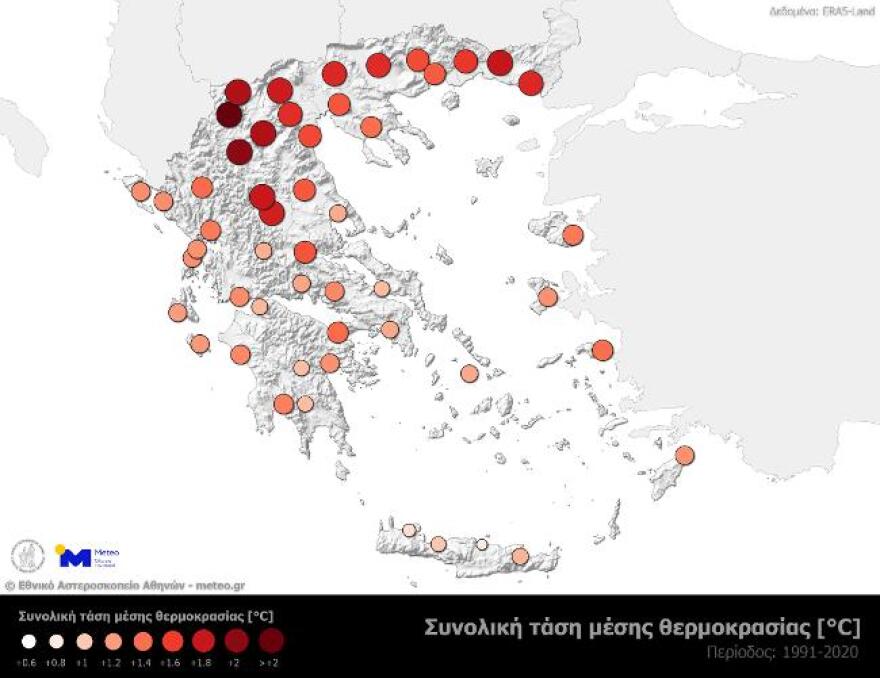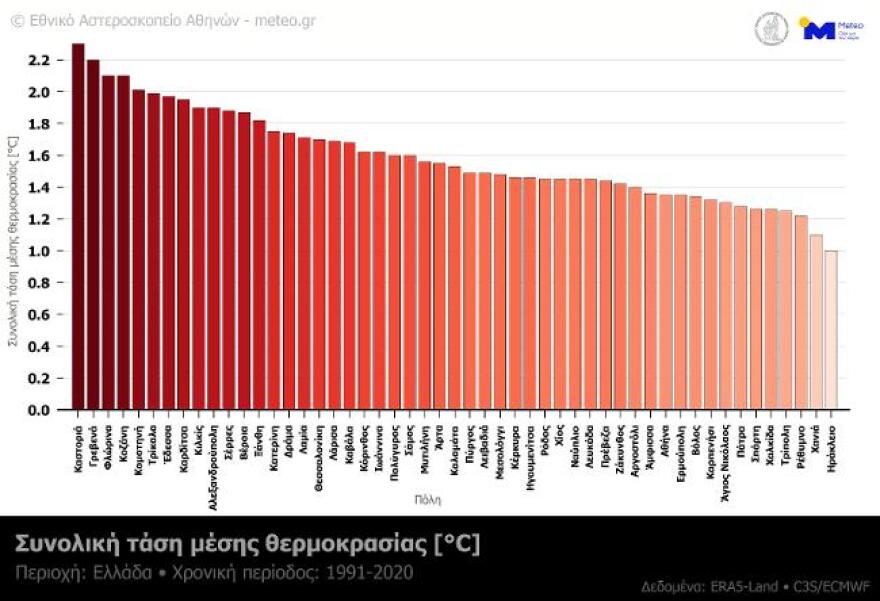More than 1.5 degrees has increased the average temperature in Greece over the past 30 years, according to a study by the National Observatory of Athens (meteo).
The study was for the period 1991-2020 and looked at trends in temperature, precipitation, and sea temperature over the last 30 years. The data analysed came from the European Copernicus service.
Regarding temperature, Figure 1 shows the trend of change in average daily temperature over the thirty-year period 1991-2020 for all the capitals of the country’s regional units. As can be seen in Figure 1, in the whole of Greece this trend is increasing. On average and for the whole Greek territory, the increasing trend is about 0.05 °C per year, which means that the average temperature in the country has increased by about 1.5 °C over the last 30 years.

But this increase shows geographical variations. In particular, in many areas, especially in northern Greece, which are far from the sea, the trend is about 0.07 °C per year, which means that the average temperature in these areas has increased by more than 2 °C in the last 30 years. In contrast, in areas of southern Greece, and especially in Crete, the trend is much smaller. Figure 2 presents the same information but in the form of histograms for each city.
For comparison, we note that on the planet the average temperature has increased ~0.6-0.8 °C over the same period, while in Europe it has increased by 1.2 degrees.

These studies are considered important for monitoring climate change in our country, as they allow us to identify where the greatest impacts of climate change are being recorded.
Ask me anything
Explore related questions





